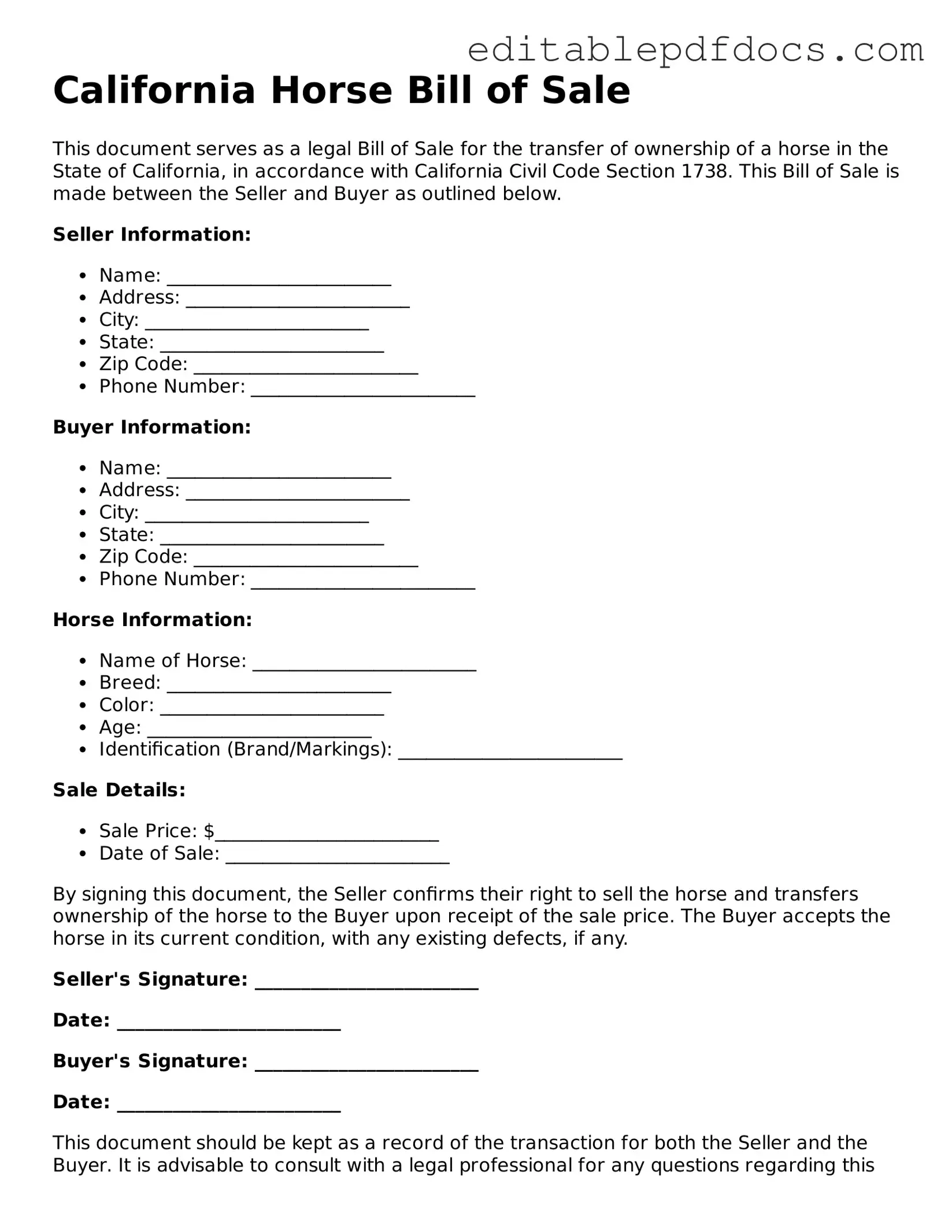Filling out the California Horse Bill of Sale form can be straightforward, but many people still make common mistakes. One frequent error is failing to include all necessary information about the horse. The form requires specific details such as the horse's name, breed, age, and registration number, if applicable. Omitting any of these details can lead to confusion or disputes later on.
Another mistake is neglecting to provide accurate contact information for both the buyer and the seller. This information is crucial for any future correspondence regarding the horse. If either party needs to reach the other for any reason, having incorrect or incomplete contact information can create unnecessary complications.
Many individuals also overlook the importance of signatures. Both the buyer and the seller must sign the form to validate the transaction. Failing to do so can render the document ineffective, potentially leading to legal issues down the line. It's essential to ensure that both parties sign and date the form correctly.
Additionally, people often forget to include the sale price. This detail is not just a formality; it serves as a record of the transaction. Without it, there may be disputes regarding the value of the horse, especially if any issues arise after the sale.
Another common oversight is not keeping a copy of the completed form. After the transaction, it's vital for both parties to retain a copy for their records. This document serves as proof of sale and can be useful in case of any disputes or claims in the future.
Some individuals may also fail to disclose any known issues with the horse. Honesty is critical in any transaction. If a seller knows of specific health issues or behavioral problems, these should be disclosed to the buyer. Not doing so can lead to legal ramifications if the buyer feels misled.
Lastly, people sometimes forget to check for any additional requirements that may be specific to their county or municipality. Local regulations can vary, and it’s important to ensure compliance with any additional paperwork or requirements that may be necessary for a horse sale in your area.
